Creatine monohydrate
Synonym(s):Creatine monohydrate;N-Amidinosarcosine monohydrate
- CAS NO.:6020-87-7
- Empirical Formula: C4H11N3O3
- Molecular Weight: 149.15
- MDL number: MFCD00071582
- EINECS: 611-954-8
- SAFETY DATA SHEET (SDS)
- Update Date: 2025-12-26 12:07:08
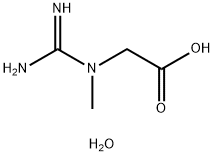
What is Creatine monohydrate?
Description
Creatine Monohydrate is the monohydrate form of creatine similar or identical to endogenous creatine produced in the liver, kidneys, and pancreas. Pure creatine is a white, tasteless,odorless powder, that is a naturally occurring metabolite found in muscle tissue.
Creatine monohydrate is an amino acid produced in the human body that plays a role in replenishing the energy supply to muscle cells.Creatine is usually produced to a purity of 99.5 percent or higher.Until recently, the primary use for creatine was as a laboratory reagent, demand for which was relatively limited.In the early 1990's, however, weight trainersand other athletes began using creatine in the belief that it stimulates muscle growth and reduces muscle fatigue.
Chemical properties
Creatine monohydrate is a colorless, crystalline substance used in muscle tissue for the production of phosphocreatine, an important factor in the formation of adenosine triphosphate (ATP), the source of energy for muscle contraction and many other functions in the body.
The Uses of Creatine monohydrate
Creatine is a natural compound made from the amino acids l-arginine, glycine, and methionine.Creatine monohydrate is a creatine with one molecule of water connected to it. Our bodies can produce creatine, however they also can take in and store creatine found in diverse meals like meat, eggs, and fish.
Creatine monohydrate supplementation is promoted as an ergogenic aid, which refers to a product purported to enhance energy production,utilization, control, and efficiency (Mujika and Padilla,1997).Creatine is purported to increase power, strength, and muscle mass and to decrease performance time (Demant et al.,1999).
Involved with rapid ATP production primarily in skeletal muscle tissue via the action of creatine kinase(s).
The Uses of Creatine monohydrate
Creatine monohydrate is involved in rapid ATP production primarily in skeletal muscle tissue via the action of creatine kinase(s). It may be used as a supplement to study its uptake mechanism and metabolism of action. It is used in the treatment of neuromuscular diseases.
What are the applications of Application
Creatine monohydrate is involved with rapid ATP production primarily in skeletal muscle tissue via the action of creatine kinase(s)
Preparation
Creatine monohydrate can be synthesized in the laboratory (and commercially), starting from cyanamide and sarcosine (N-methylglycine).
Creatine is a nitrogenous organic acid that occurs naturally in vertebrates and helps to supply energy to all cells in the body, primarily muscle by playing a key role in muscle energy metabolism. It is produced in the liver, pancreas, and kidneys and can also be derived from food and dietary supplements. Creatine provides the energy needed for muscle contraction and substantially improves performance in high-intensity exercise because it improves anaerobic capacity and protein synthesis. Therapeutically, it has been used to treat some types of muscular dystrophy, ocular atrophy, and some types of sclerosis. Creatine (a dietary supplement) is demanded by many athletes and is neither regulated by the Food and Drug Administration (FDA) nor prohibited by the International Olympic Committee (IOC).
Benefits
Creatine has many benefits for health and performance. The most common is creatine monohydrate, a dietary supplement that improve strength, increase lean muscle mass, and help the muscles recover more quickly during exercise. It can also inhibit the generation of muscle fatigue factors, reduce fatigue and tension, restore physical fitness, accelerate protein synthesis in the human body, make muscles stronger, enhance muscle elasticity, reduce cholesterol, blood lipids, and blood sugar levels, improve middle-aged and elderly Muscular dystrophy, and delay aging.
Biochem/physiol Actions
Creatine is a nitrogenous compound that acts as a high-energy reservoir for the rapid regeneration of ATP. Approximately 95% of creatine is found in skeletal muscle, primarily as phosphocreatine. Creatine can be acquired through dietary consumption or formed from L-arginine, glycine, and L-methionine in a multi-step reaction that occurs in the kidneys and liver. Creatine is then transported to muscle tissue. Creatine supplementation is used for the enhancement of sports performance, primarily by increasing muscle mass. Creatine is also being investigated as a treatment of neuromuscular diseases, where it may aid in neuroprotection and by improving the cellular bioenergetic state.
Mechanism of action
Early research proposed that the osmotic effect of creatine supplementation serves as a cellular stressor (osmosensing) that acts as an anabolic stimulus for protein synthesis signal pathways. Other reports indicated that creatine directly affects muscle protein synthesis via modulations of components in the mammalian target of rapamycin (mTOR) pathway. Creatine may also directly affect the myogenic process (formation of muscle tissue), by altering secretions of myokines, such as myostatin and insulin-like growth factor-1, and expressions of myogenic regulatory factors, resulting in enhanced satellite cells mitotic activities and differentiation into myofiber. Overall, there is still no clear understanding of the mechanisms of action regarding how creatine affects muscle mass/growth, but current evidence suggests it may exert its effects through multiple approaches, with converging impacts on protein synthesis and myogenesis.
Side Effects
Weight gain
Muscle cramps
Muscle strains and pulls
Stomach upset
Diarrhea
Dizziness
High blood pressure
Liver dysfunction
Kidney damage
Purification Methods
Likely impurities are creatinine and other guanidino compounds. It crystallises from the minimum volume of boiling H2O as the monohydrate. The hydrate is also obtained by dissolving in H2O and adding Me2CO. Drying under vacuum over P2O5 or drying at 100o gives the anhydrous base. The anhydrous base can be obtained also by dissolving the hydrate in H2O, seeding with the anhydrous base and cooling in ice. A m of 258 -268o(dec) was reported. The picrate crystallises from 17 parts of H2O with m of 218-220o(dec). [King J Chem Soc 2377 1930, Hoffmann et al. J Am Chem Soc 58 1730 1936, Mendel & Hodgkin Acta Cryst 7 443 1954, Greenstein & Winitz The Chemistry of the Amino Acids J. Wiley, Vol 3 p 2750 1961, Beilstein 4 III 1170, 4 IV 2425.]
Properties of Creatine monohydrate
| Melting point: | 292 °C (dec.)(lit.) |
| RTECS | MB7706000 |
| storage temp. | 2-8°C |
| solubility | slightly soluble in water, insoluble in ethanol and ether. |
| form | Crystalline Powder |
| color | White to yellow |
| PH | 6.9 (10g/l, H2O, 20℃) |
| Water Solubility | 13 g/L (20 ºC) |
| Merck | 14,2568 |
| BRN | 907175 |
| Stability: | Hygroscopic |
| InChI | InChI=1S/C4H9N3O2.H2O/c1-7(4(5)6)2-3(8)9;/h2H2,1H3,(H3,5,6)(H,8,9);1H2 |
| CAS DataBase Reference | 6020-87-7(CAS DataBase Reference) |
| NIST Chemistry Reference | Creatine hydrate(6020-87-7) |
Safety information for Creatine monohydrate
| Signal word | Warning |
| Pictogram(s) |
 Exclamation Mark Irritant GHS07 |
| GHS Hazard Statements |
H315:Skin corrosion/irritation H319:Serious eye damage/eye irritation H335:Specific target organ toxicity, single exposure;Respiratory tract irritation |
| Precautionary Statement Codes |
P261:Avoid breathing dust/fume/gas/mist/vapours/spray. P264:Wash hands thoroughly after handling. P264:Wash skin thouroughly after handling. P280:Wear protective gloves/protective clothing/eye protection/face protection. P304+P340:IF INHALED: Remove victim to fresh air and Keep at rest in a position comfortable for breathing. P305+P351+P338:IF IN EYES: Rinse cautiously with water for several minutes. Remove contact lenses, if present and easy to do. Continuerinsing. P405:Store locked up. |
Computed Descriptors for Creatine monohydrate
| InChIKey | MEJYXFHCRXAUIL-UHFFFAOYSA-N |
| SMILES | N(C)(C(N)=N)CC(=O)O.O |
Creatine monohydrate manufacturer
JSK Chemicals
Oxford Lab Fine Chem LLP
New Products
4,4-Difluoropiperidine hydrochloride tert-butyl 9-methoxy-3-azaspiro[5.5]undecane-3-carboxylate Indole Methyl Resin N-Isopropylurea N,N-Dicyclohexylcarbodiimide(DCC) MELDRUMS ACID 5-METHYLISOXAZOLE-4-CARBOXYLIC ACID Magnessium Bis glycinate Zinc ascorbate 1-bromo-2-butyne 2-acetamidophenol 9(10H)-anthracenone Erythrosin B, 4-Piperidinopiperidine 2-((4-morpholinophenylamino) (methylthio) methylene) malononitrile 2,4-dihydroxybenzaldehyde 3-(4-morpholinophenylamino)-5-amino-1H-pyrazole-4-carbonitrile Methyl 2-methylquinoline-6-carboxylate 2,6-dichloro-4-nitropyridine 4-Bromo-2-chlorobenzonitrile 2-(benzylamino)acetic acid hydrochloride 4-(tert-Butoxycarbonylamino)but- 2-ynoic acid 3,4-dihydro-2H-benzo[b][1,4]dioxepine 1-Phenyl-1-cycloprppanecarboxylicacidRelated products of tetrahydrofuran
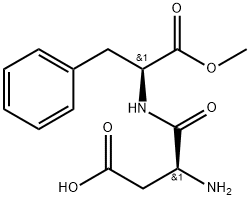


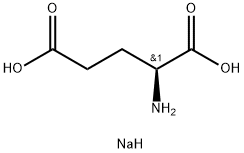
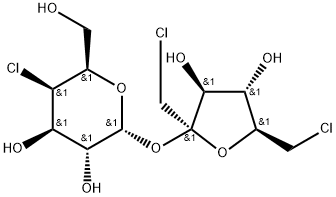


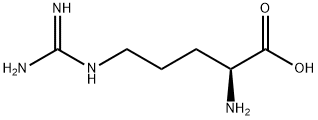
You may like
-
 Creatine Monohydrate extrapure CAS 6020-87-7View Details
Creatine Monohydrate extrapure CAS 6020-87-7View Details
6020-87-7 -
 Creatine, monohydrate CAS 6020-87-7View Details
Creatine, monohydrate CAS 6020-87-7View Details
6020-87-7 -
 Creatine Hydrate CAS 6020-87-7View Details
Creatine Hydrate CAS 6020-87-7View Details
6020-87-7 -
 Creatine Monohydrate 98% CAS 6020-87-7View Details
Creatine Monohydrate 98% CAS 6020-87-7View Details
6020-87-7 -
 CREATINE MONOHYDRATE Extra Pure CAS 6020-87-7View Details
CREATINE MONOHYDRATE Extra Pure CAS 6020-87-7View Details
6020-87-7 -
 Cytosine 95.00% CAS 6020-87-7View Details
Cytosine 95.00% CAS 6020-87-7View Details
6020-87-7 -
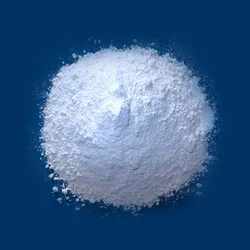 Creatine Mono 80 MeshView Details
Creatine Mono 80 MeshView Details
6020-87-7 -
 Powder Creatine (Creatine Monohydrate) (CAS Number: 6020-87-7)View Details
Powder Creatine (Creatine Monohydrate) (CAS Number: 6020-87-7)View Details
6020-87-7
